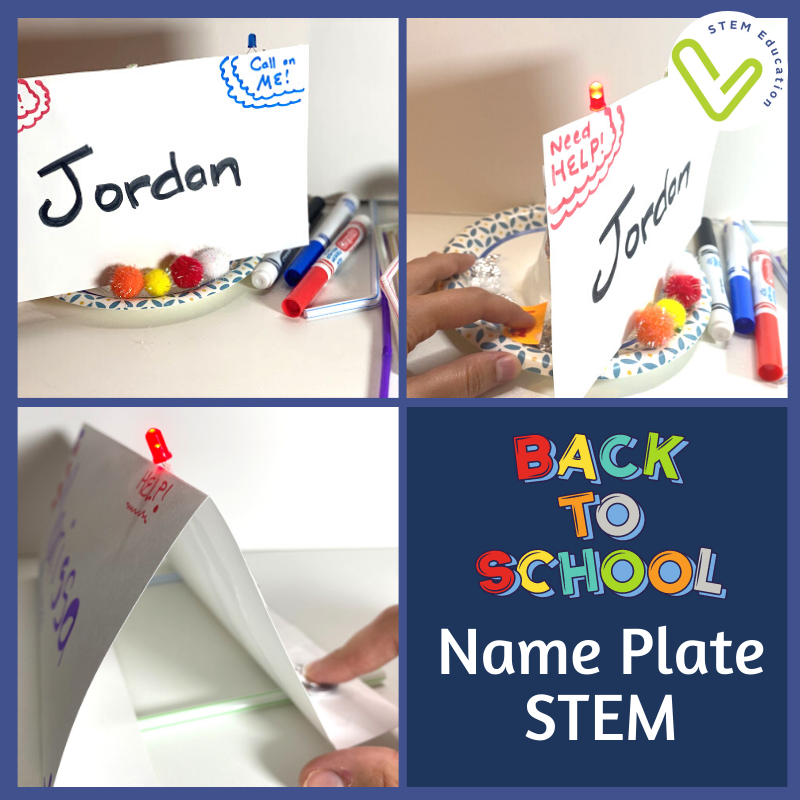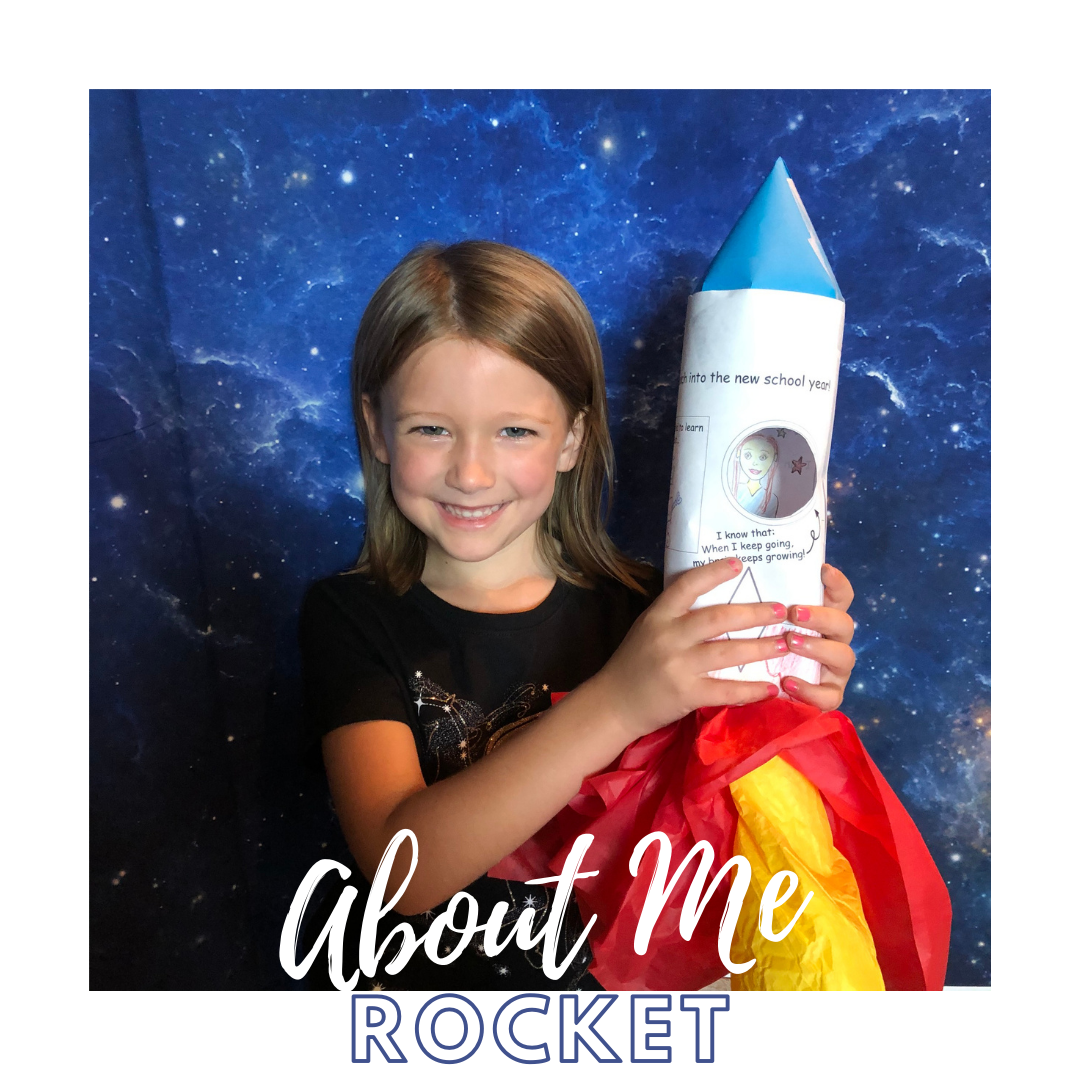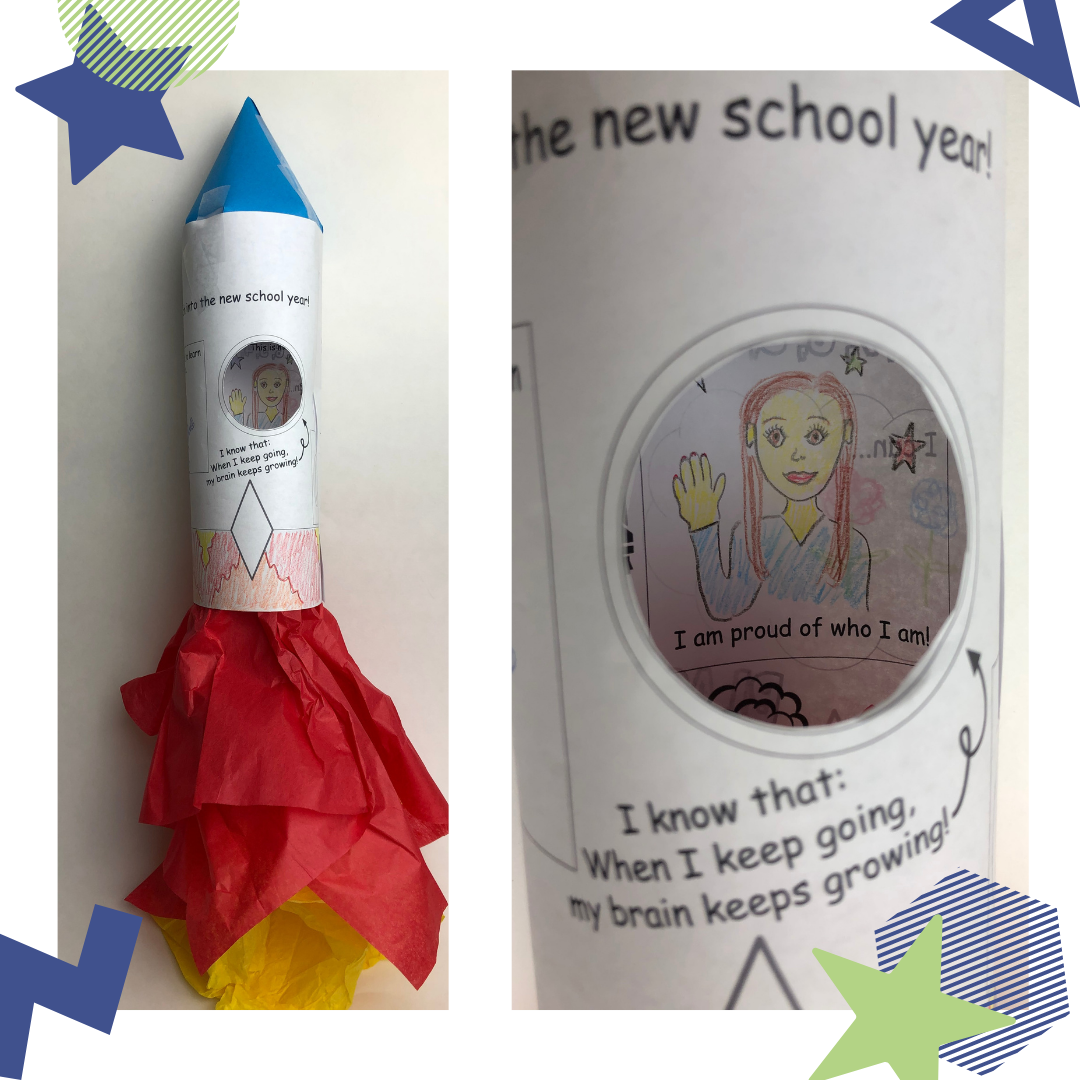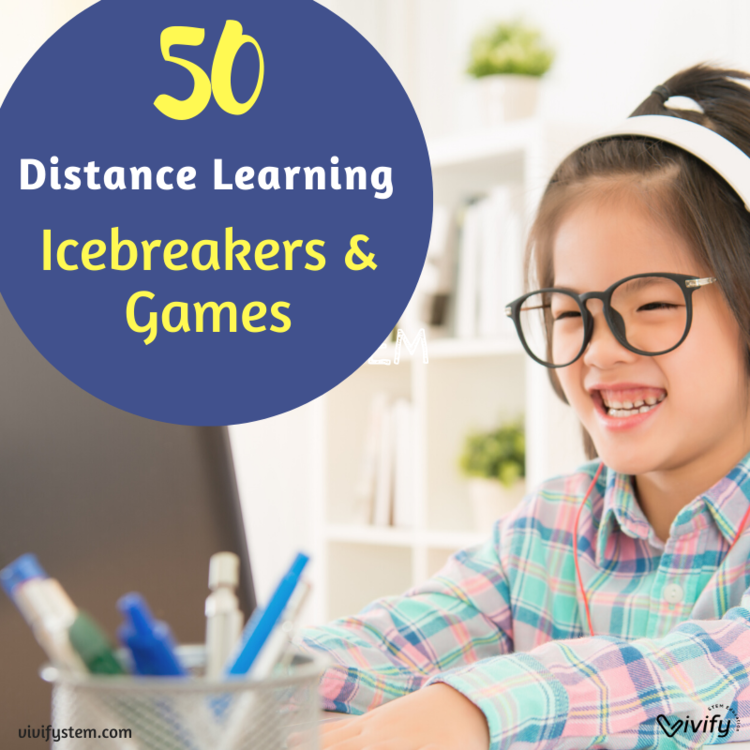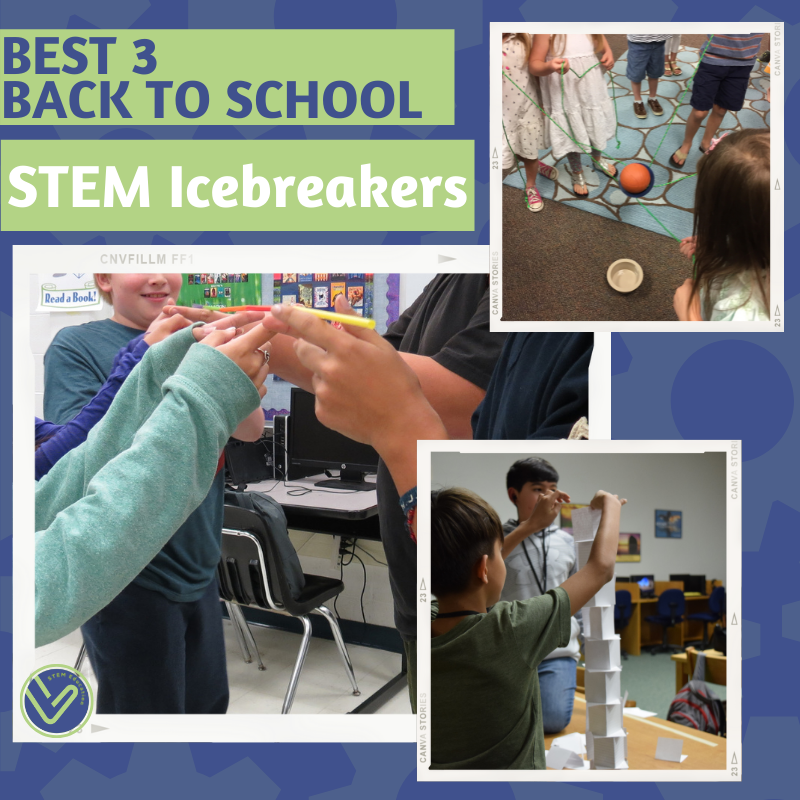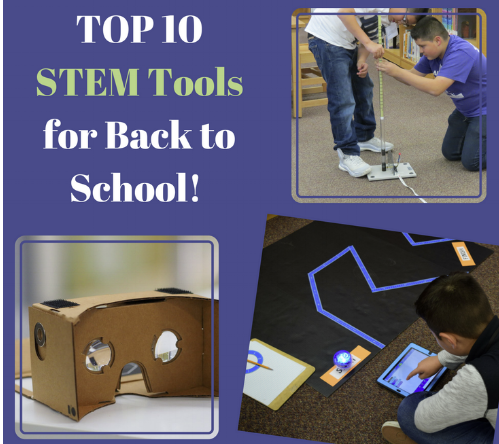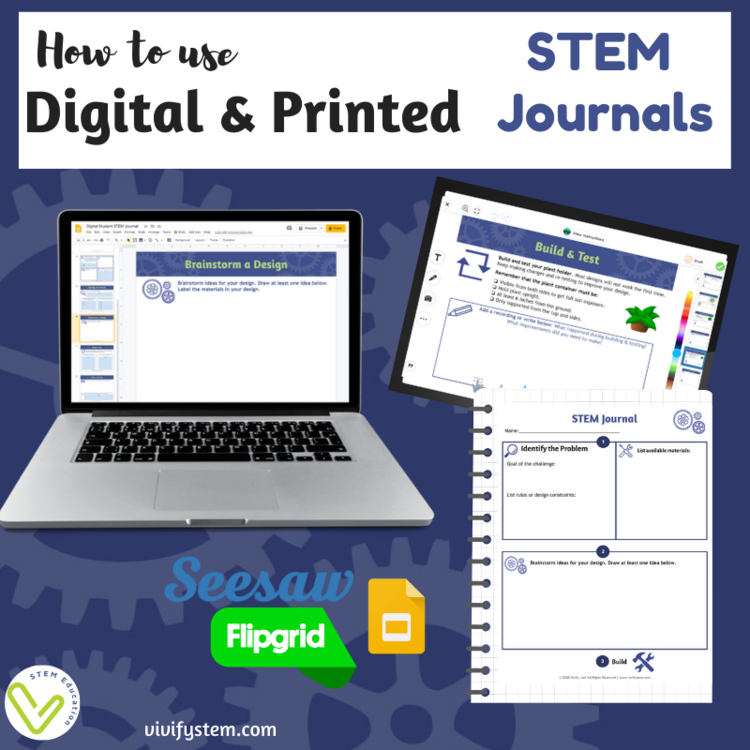Get Your STEM Classroom Ready for Back to School!
Post by Dr. Natasha Wilkerson
Originally Posted: August 3, 2021
Updated August 2025
August is here, and that means back to school season! But don’t stress, we have you covered with our favorite STEM icebreakers, activities to introduce STEM to your students, and even classroom posters and freebies!
Before we dive in, let’s first talk about what makes a STEM icebreaker. Ideally, STEM activities need to incorporate math and science concepts to solve a problem using the engineering design process. However, basic STEM skills such as communication and critical thinking are the foundation needed to support successful STEM education. You can read more about the different stages of STEM at our post here. The activities we use to build these foundational skills are Stage 1 STEM or icebreakers. Here are some of our favorites to start off the year!
Name Plate STEM Activity
Kick off the year with innovative nameplates for your students! Students will first learn about circuits and then create their own light-up name tag or nameplate with a button switch in the back. Each light can represent different commands like "call on me" or "I need help". The activity includes digital and printed handouts that are editable in Google Slides.
Pop It STEM Icebreaker Activity
Here is a fun icebreaker activity to build critical thinking skills using the popular Pop It fidget toy! Divide your class into teams or pairs with one Pop It between each pair or set of teams. Have the kids take turns creating “pictures” out of the depressed bubbles and having their team (or other person) guess what it is! Give them a science category like “mammals” or “weather” to narrow down options. This can also be used as an introduction to computer coding with a discussion on binary (“on” and “off” with 1’s and 0’s) as well as how pixels form a picture. This is so much fun and gets kids’ brains working at the beginning of the school year! Find more STEM icebreakers on our Instagram page!
Who is an Engineer or Scientist?
Everyone knows that engineers are nerdy guys with glasses and scientists always have crazy hair! Start the year by breaking down stereotypes by showing your students that anyone, including them, can be an engineer or scientist!
Every year, I begin with a handout (free in The STEM Space Explorer Library) that explains the definition of a scientist, a technologist, an engineer, and a mathematician; and asks them to draw a picture of each one.
I then have students describe what a scientist or engineer looks like. Last year, all the responses started with “He...”. He wears a lab coat. He has crazy hair. He wears glasses. First of all, I’m like, “Hello!!! I’m an engineer, remember?!”
Next, I show the slide (pictured right) and have my students point to who is a scientist or engineer. Only ONE student in the kindergarten thru 6th graders said, “they could all be engineers or scientists!” The overwhelming majority chose the lab coat male model or the male senator.
This activity inspired us to create a series of lessons that help break down stereotypes and encourage students to imagine themselves as STEM professionals. Here is our sequence:
Uncover Stereotypes: Students will first draw what they think a STEM professional looks like and describe common characteristics.
Who is an Engineer or Scientist? Game: An editable slideshow for teachers to have students guess if each person pictured is a scientist, engineer, or neither.
Research & Reflect: Students research a scientist and engineer and reflect on whether physical traits can determine a STEM professional.
Find the full teacher guide, lesson, and game linked below!
Growth Mindset Paper Rocket Activity!
This back-to-school resource is a great way to build community with your students and start the conversation about growth mindset! Students will color and draw pictures or write answers to the questions on the activity sheet. Then turn it into a rocket, complete with a window peering in at a picture of them that reads, "I am proud of me." The teacher guide not only walks you through how to complete the activity but also how to guide the conversation while you fill out the sheet as a class. This activity will help you connect with your students' interests as well as setting the stage for a positive reference point for your students to feel supported and confident in your classroom!
STEM Quick Build Activities
Using whatever supplies you have available (favorites listed below), have students do a quick build with a provided task card. For example, build something that flies using straws and paper. Or build a shelter to protect an animal from a predator. STEM quick builds are ideal for introductory STEM activities, STEM stations, back to school icebreakers, distance learning games, or the introduction of a new theme or concept.
Examples of materials for STEM quick-build activities:
Paper: newspaper, paper, copy paper
Index cards
Paper or plastic cups
Toilet paper rolls
Plastic bottles
Craft sticks
Rubber bands
Pipecleaners
Paperclips
Straws
Check out these activities for STEM quick build challenges:
Building Brick STEM Challenge Cards - These also can be used with the Brickit app!
STEM Task Cards - great for distance learning!
STEM Classroom Posters & Rules
How are you decorating your classroom this year? Do you put rules in your classroom? Check out how Claire decorates her classroom for inspiration plus our new engineering design posters!
Grab Vivify’s FREE Engineering Design Process Classroom Poster set!
Find the space-themed engineering design bulletin board posters here!
STEM Classroom Posters
FREE posters of Women in STEM:
Free posters by We Are Teachers
Top STEM Posters from Amazon - I love these Mars retro posters!
Poster of STEM Rules
Does having a STEM classroom or makerspace bring you both joy and stress? I love that my students have access to all the supplies they need in an organized space... but it doesn’t always stay organized. To keep my classroom as a welcoming and accessible space for making, it needs some rules.
Here are the rules in my classroom:
M - Minimize the amount of supplies you use and the trips you take.
A - Always make a design before getting supplies.
K - Keep the tape roll at the makerspace.
E - Every group sends only one person to get materials.
R - Respect peoples’ space.
Want More STEM Back to School Ideas?
Check out these previous blog posts for inspiration and ideas.
Note: Vivify STEM, LLC is a participant in the Amazon Services LLC Associates Program, an affiliate advertising program designed to provide a means for us to earn fees at no extra cost to you by linking to Amazon.com and affiliated sites!


